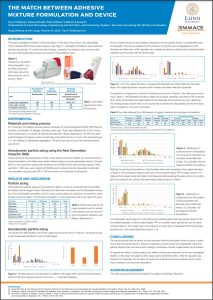The Match Between Adhesive Mixture Formulation And Device
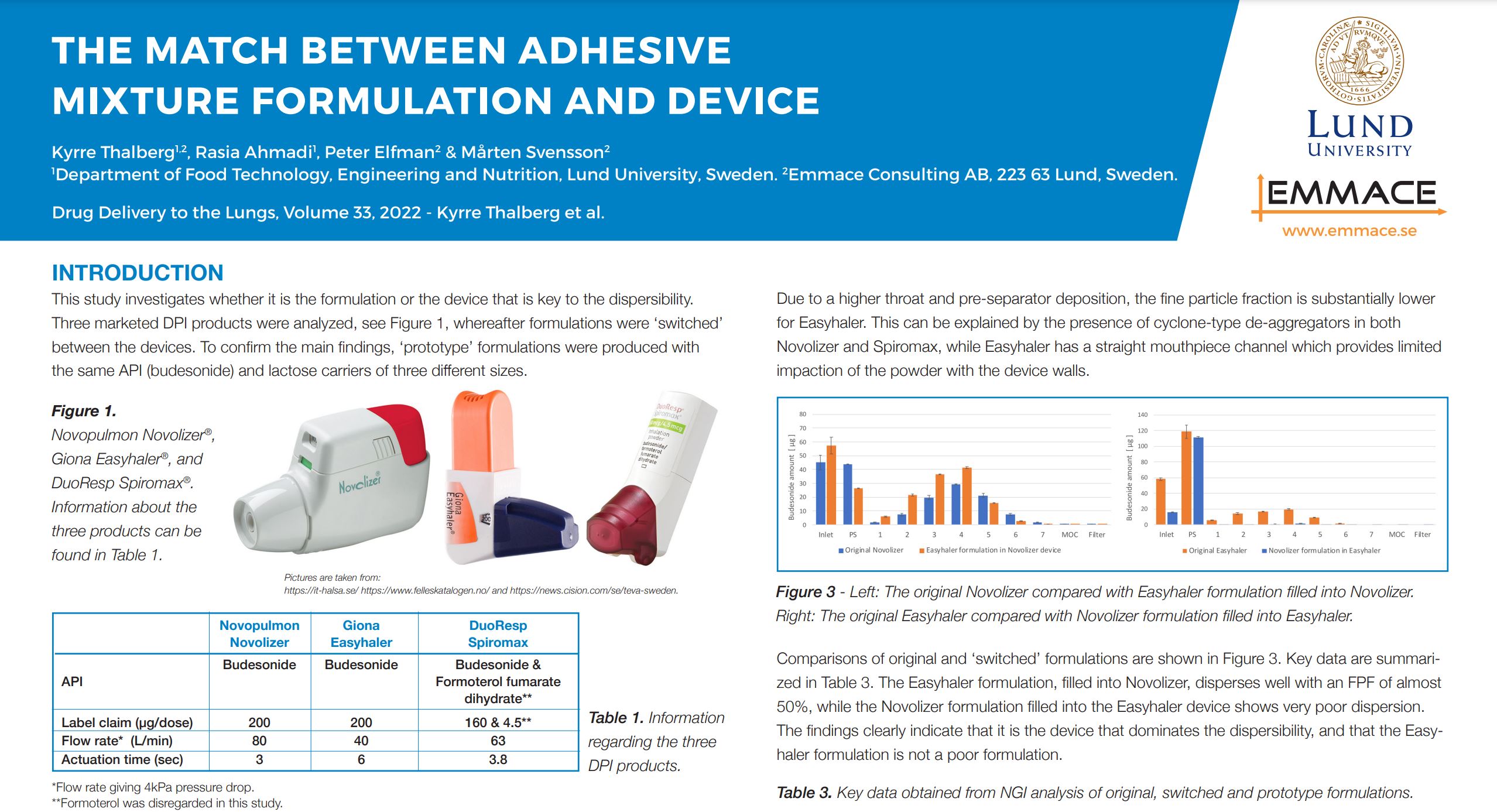
The LUND University Sweden, Emmercon and the Swedish Foundation for Strategic Research proudly present the following study:
The Match Between Adhesive Mixture Formulation And Device
INTRODUCTION
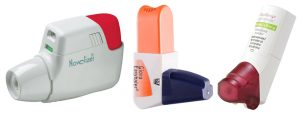
This study investigates whether it is the formulation or the device that is key to the dispersibility. Three marketed DPI products were analyzed, see Figure 1, where after formulations were ‘switched’ between the devices. To confirm the main findings, ‘prototype’ formulations were produced with the same API (budesonide) and lactose carriers of three different sizes.
Figure 1_Novopulmon Novolizer® , Giona Easyhaler®, and DuoResp Spiromax®. Information about the three products can be found in Table 1.
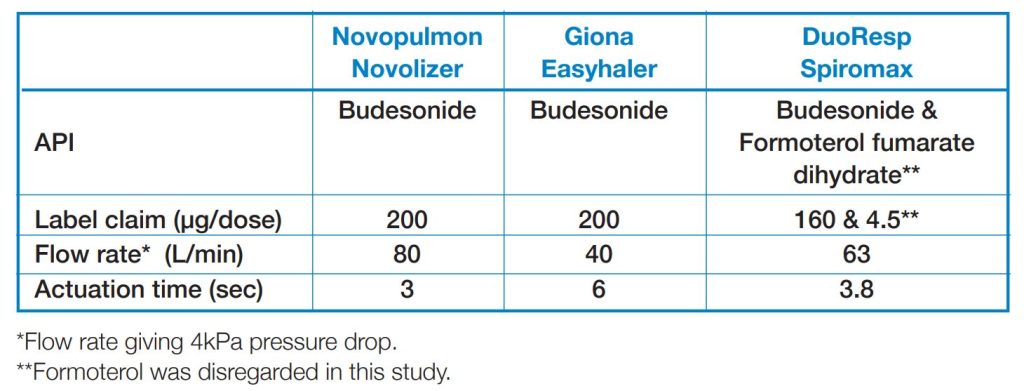
Table 1. Information regarding the three DPI products.
EXPERIMENTAL
Materials and mixing process
For ‘prototype’ formulations lactose carriers Lactohale LH100 and Respitose SV003, DFE Pharma, Germany, and Inhalac 70, Meggle, Germany, were used. These were blended with 2.0% of micronized budesonide in a Turbula T2C blender (W. Bachofen, Basel, Switzerland). The API was sandwiched between the lactose carrier and blending was performed at 2 x 10 min with sieving through 0.71 mm halfway, to disintegrate aggregates. The batch size was 50 g and the operating speed was 48 rpm.
Aerodynamic particle sizing using the Next Generation Impactor (NGI)
Original products were handled according to their patient instruction leaflets. For switched and prototype formulations, all inhalers were shaken before loading to ensure appropriate dosing. For each NGI run, six consecutive doses were withdrawn to the NGI at a flow rate corresponding to 4 kPa, see Table 1. NGI cups were coated with Brij/Glycerol to prevent bounce. Deposited budesonide was quantified using isocratic HPLC. NGI tests were run in duplicate for all batches.
RESULTS AND DISCUSSION
Particle sizing
The results from particle sizing are summarized in Table 2. It can be concluded that the Novolizer formulation has the largest carrier, followed by the Spiromax formulation and the Easyhaler formulation. For the Easyhaler formulation, the D10 value is particularly low, pointing to the presence of fine lactose in the formulation. The Novolizer formulation, on the other hand, has a very high D10 value.
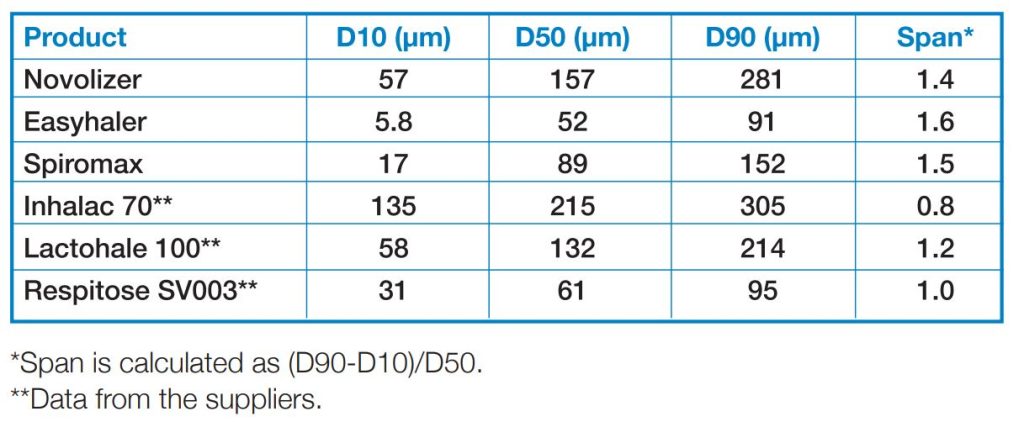
Table 2. Particle size data for the original products and for lactose carrier grades used for the prototype formulations obtained using Malvern Mastersizer S.
Aerodynamic particle sizing
The results from NGI analysis of the three original products are shown in Figure 2. All products give a wide budesonide distribution over the NGI stages.

Figure 2 – Budesonide amounts deposited on different NGI stages (left), and fine particle fractions right) for the three original products. Error bars = ± 1 standard deviation.
Due to a higher throat and pre-separator deposition, the fine particle fraction is substantially lower for Easyhaler. This can be explained by the presence of cyclone-type de-aggregators in both Novolizer and Spiromax, while Easyhaler has a straight mouthpiece channel which provides limited impaction of the powder with the device walls.

Figure 3 – Left: The original Novolizer compared with Easyhaler formulation filled into Novolizer. Right: The original Easyhaler compared with Novolizer formulation filled into Easyhaler.
Comparisons of original and ‘switched’ formulations are shown in Figure 3. Key data are summarized in Table 3. The Easyhaler formulation, filled into Novolizer, disperses well with an FPF of almost 50%, while the Novolizer formulation filled into the Easyhaler device shows very poor dispersion. The findings clearly indicate that it is the device that dominates the dispersibility, and that the Easyhaler formulation is not a poor formulation.
NGI data for prototype formulations in the Novolizer device are compared to the original Novolizer in Figure 4. All formulations disperse well, with a trend towards higher FPF for larger carriers. It is believed that a larger carrier will collide more frequently before leaving Novolizer, due to the centrifugal forces acting in the cyclone. Key performance data are given in Table 3.
In the Easyhaler device (Figure 5), all prototype formulations gave lower fine particle fractions than the original Easyhaler. A trend towards higher FPF for a smaller carrier particle size can be observed (see Table 3). This is likely due to the presence of carrier fines in Respitose SV003 and added lactose fines in the original Easyhaler product [1-3].
CONCLUSIONS
The results indicate that the device is more important than the formulation when it comes to achieving a high fine particle fraction. Devices containing a cyclone produced considerably higher fine particle fractions than the device with a straight mouthpiece channel, independently of formulation.
As regards the effect of carrier particle size, different trends were observed for the two investigated inhalers. In Novolizer, formulations with a larger carrier performed better, while the opposite was observed for Easyhaler. For the latter, the presence of added fine lactose particles and/or carrier fines is believed to be the main explanation.
Download the full poster “The Match Between Adhesive Mixture Formulation And Device” here
(or click on the picture below)
Source: Kyrre Thalberg, Rasia Ahmadi, Peter Elfman & Mårten Svensson, The Match Between Adhesive Mixture Formulation And Device, Drug Delivery to the Lungs, Volume 33, 2022 – Kyrre Thalberg et al., LUND University, Emmace https://www.emmace.se/


